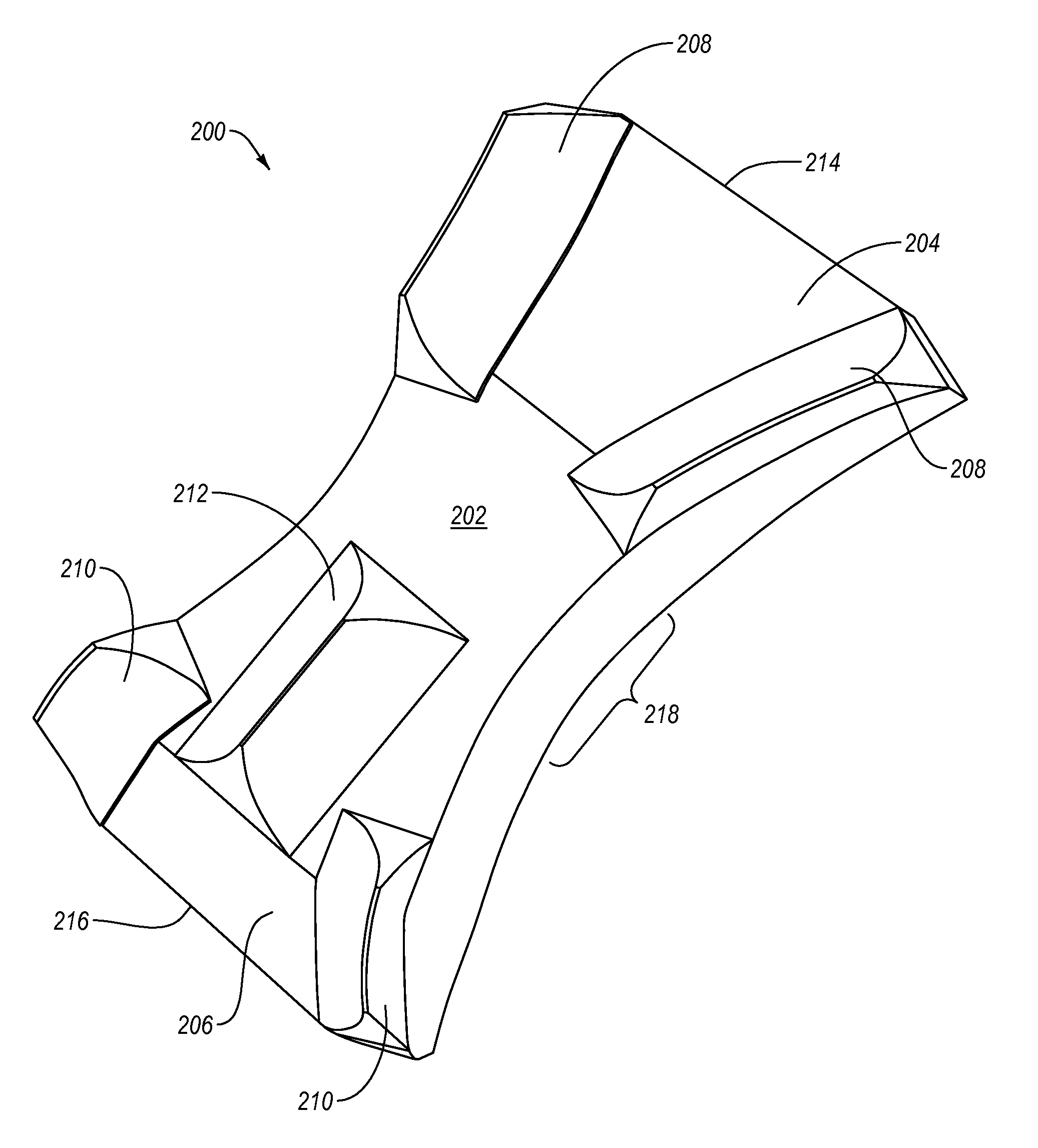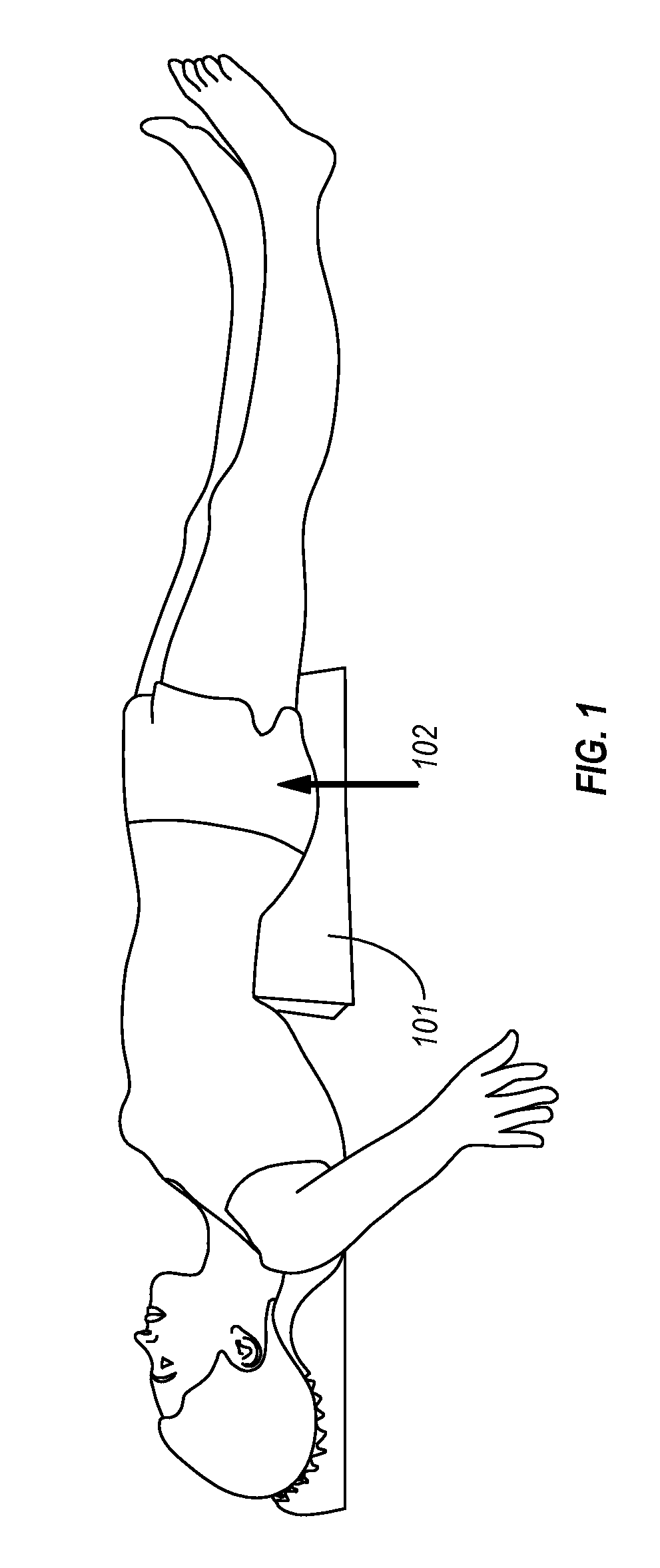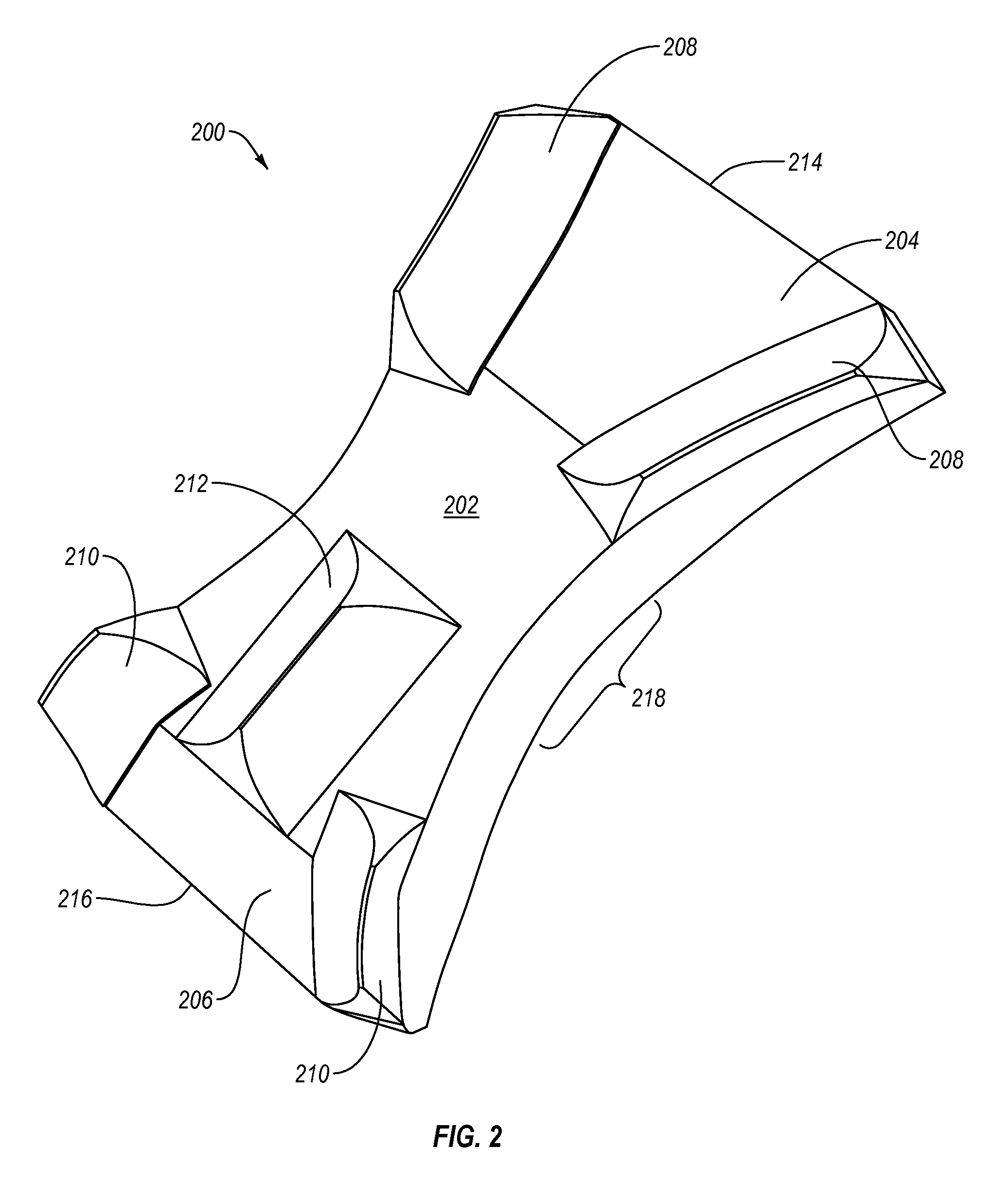Device and method for pelvic elevation and stabilization of surgical patient
a technology for surgical patients and pelvis, applied in the field of pelvic elevation and stabilization devices, can solve the problems of compromising the surgeon's ability to place implants at the desired posterior, patient instability, patient body instability, etc., and achieves the effects of reducing pressure on body tissue, adequate cushioning, and stable weight suppor
- Summary
- Abstract
- Description
- Claims
- Application Information
AI Technical Summary
Benefits of technology
Problems solved by technology
Method used
Image
Examples
Embodiment Construction
[0021]Implementations of the present invention involve methods and apparatus configured to allow the convenient, reliable and secure positioning of a surgical patient. In one aspect, the invention provides an iliosacral cradle that elevates the ilium and the sacrum, while yet providing stable support to the buttock and flank. The iliosacral cradle is configured to allow for access to the anatomy, e.g., posterolateral buttock for proper positioning of drills, implants, and other surgical equipment to achieve fracture reduction or fixation. The iliosacral cradle elevates the patient's pelvis above the surgical table surface adequately to allow a surgeon to position his / her hands, while holding surgical tools, for the desired posterior-to-anterior vector placement. The cradle distributes the patient's weight over the upper-legs, buttocks, and lower-back of the patient and provides adequate cushioning to hard and soft tissues under pressure. As a result, the cradle provides stable weigh...
PUM
 Login to View More
Login to View More Abstract
Description
Claims
Application Information
 Login to View More
Login to View More - R&D
- Intellectual Property
- Life Sciences
- Materials
- Tech Scout
- Unparalleled Data Quality
- Higher Quality Content
- 60% Fewer Hallucinations
Browse by: Latest US Patents, China's latest patents, Technical Efficacy Thesaurus, Application Domain, Technology Topic, Popular Technical Reports.
© 2025 PatSnap. All rights reserved.Legal|Privacy policy|Modern Slavery Act Transparency Statement|Sitemap|About US| Contact US: help@patsnap.com



